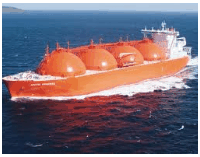
The AFR has a home ground interpretation of US LNG issues today (via Foreign Policy):
The biggest construction project in the world is on the rocks. That could have big negative implications for the United States as it tries to turn its natural-gas bonanza into an engine of export earnings and geopolitical influence.
The project is the expansion of the Panama Canal to allow more and bigger ships to pass through – for instance, the large tankers that carry liquefied natural gas. Today, only about 6 per cent of the global LNG tanker fleet can pass through the canal; after the expansion, about 90 per cent of tankers will be able to use it, according to a US government study.
…The consortium building the third set of locks on the canal, the biggest part of the $US5 billion ($5.68 billion) canal expansion, said it can’t continue work unless the Panama Canal Authority picks up the tab for about $US1.6 billion in cost overruns. The construction of the new locks is a $US3 billion contract, won by an international consortium with firms from Spain, Italy, Belgium and Panama.
This article is three weeks old. Yes, the canal expansion is a vital dimension of future US LNG exports into Asia but it’s not “on the rocks”. It’s not remotely in doubt. It’s three-quarters finished and the current dispute will likely be resolved before it knocks the project back. Reuters reports on possible solutions today:
PANAMA CITY/MADRID (Reuters) – The Panama Canal Authority (PCA), a Spanish-led consortium and insurer Zurich have come up with a possible financing deal to resolve the dispute threatening a project to expand one of the world’s most important shipping routes.
…”There is a proposal on the table which the parties have put forward,” Panama Canal Administrator Jorge Quijano told reporters, referring to talks held on Tuesday. “It could offer a pretty long-term solution so work can continue.”
Quijano said that Zurich is seeking a role in attempts to resolve the dispute and is weighing up a possible deal. A source with knowledge of the matter said one option is for the insurer to convert $600 million of surety bonds into a loan that would free up money to help to complete the project.
…The consortium’s January 20 deadline has been extended to the end of the month, Quijano said, though a PCA official said that work at the construction site is running at about a quarter of capacity.
The AFR article is not done:
Clouds over the canal expansion aren’t the only concerns about US gas exports. There are also worries about the slow pace of government approvals for new natural-gas export terminals, the multibillion-dollar projects that freeze gas to a liquid suitable for transport by ship.
The Energy Department has received almost 30 applications to ship gas to countries with which the US does not have a free-trade agreement; only five of those applications have been conditionally approved, and none will be operational until 2017 at the earliest.
For projects further down the line, there is a very real worry that government approval won’t come until the LNG market is already well supplied by rival countries.
This is wrong as well. Just about everyone has been surprised at the pace of approvals from the DOE and within a few months (with the likely forthcoming approval of Cameron LNG) some 60-70 million tonnes per annum of exports to non-FTA countries (that is North Asia) will have been ticked off in a year.
Moreover, US projects down the line will still be cheaper than Australia’s magnificent seven meaning their window for approval remains open.

